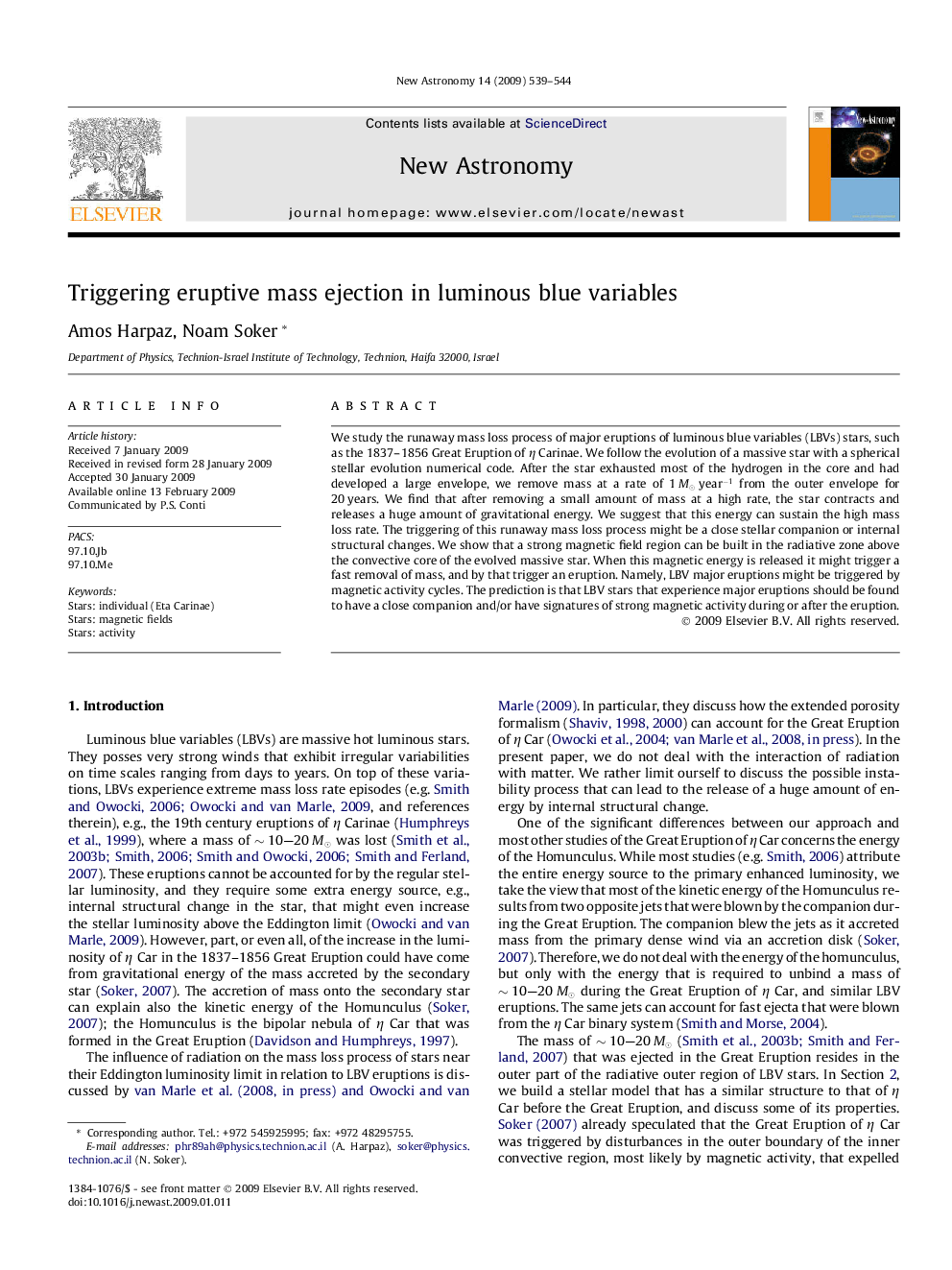| Article ID | Journal | Published Year | Pages | File Type |
|---|---|---|---|---|
| 1779814 | New Astronomy | 2009 | 6 Pages |
Abstract
We study the runaway mass loss process of major eruptions of luminous blue variables (LBVs) stars, such as the 1837-1856 Great Eruption of η Carinae. We follow the evolution of a massive star with a spherical stellar evolution numerical code. After the star exhausted most of the hydrogen in the core and had developed a large envelope, we remove mass at a rate of 1Mâyear-1 from the outer envelope for 20 years. We find that after removing a small amount of mass at a high rate, the star contracts and releases a huge amount of gravitational energy. We suggest that this energy can sustain the high mass loss rate. The triggering of this runaway mass loss process might be a close stellar companion or internal structural changes. We show that a strong magnetic field region can be built in the radiative zone above the convective core of the evolved massive star. When this magnetic energy is released it might trigger a fast removal of mass, and by that trigger an eruption. Namely, LBV major eruptions might be triggered by magnetic activity cycles. The prediction is that LBV stars that experience major eruptions should be found to have a close companion and/or have signatures of strong magnetic activity during or after the eruption.
Related Topics
Physical Sciences and Engineering
Physics and Astronomy
Astronomy and Astrophysics
Authors
Amos Harpaz, Noam Soker,
